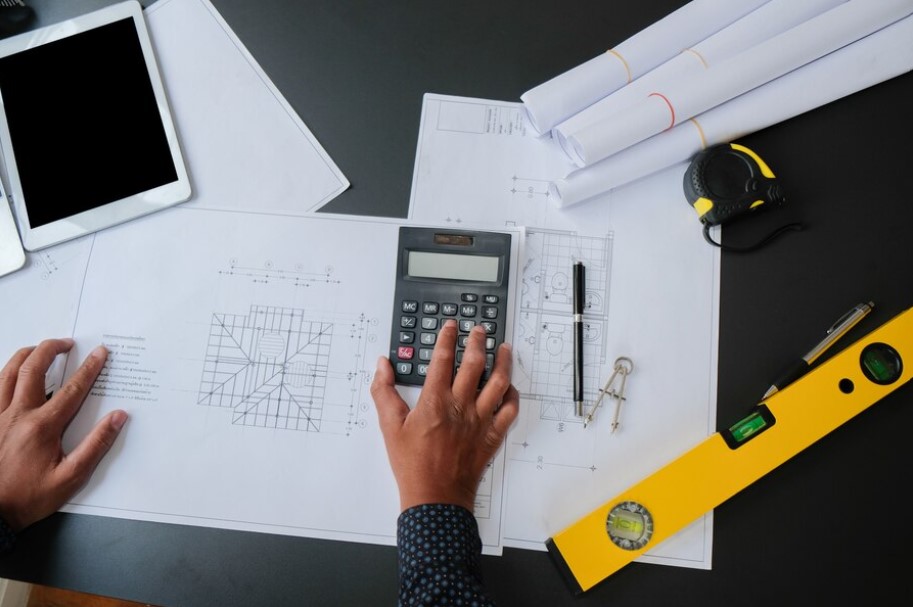Commercial construction estimation plays a vital role in the building industry. As we step into 2024, accuracy in project costs is more critical than ever. Estimating allows construction companies to plan better, save money, and increase project success. From budgeting materials like drywall and lumber to evaluating labor costs, commercial construction estimation affects every aspect of a project.
This article explores the reasons why commercial construction estimation matters in 2024. We’ll dive into its importance, the challenges faced, and the benefits of accurate estimating for businesses.
What is Commercial Construction Estimation
Commercial construction estimation is the process of calculating project costs. This includes expenses for materials, labor, permits, and more. By knowing these costs upfront, companies can avoid budget surprises and complete projects smoothly.
Unlike residential construction estimating, which often involves smaller projects, commercial estimating requires a high level of precision. Large-scale projects like office buildings, warehouses, and shopping centers need accurate cost assessments. Estimation helps builders understand all expenses, from drywall estimating to major structural components.
Why Is Commercial Construction Estimation So Important?
In commercial construction, estimating isn’t just a step in the process—it’s the foundation of a successful project. Without accurate construction cost estimating, companies risk unexpected costs, delays, and client dissatisfaction. Here’s why it’s so crucial in 2024:
Accurate Budget Planning
Budgeting is central to any construction project. With commercial construction estimation, companies can create precise budgets that reflect real costs. Accurate budgets prevent overspending, ensuring projects stay within financial limits. This also builds trust with clients, who appreciate a clear, reliable budget estimate.
Competitive Bidding
In commercial construction, competitive bidding is common. Accurate estimates give companies a competitive edge by allowing them to bid confidently. Bids that reflect the true costs of materials, labor, and overheads have a higher chance of acceptance. Estimating also helps firms highlight savings for clients, which makes bids even more appealing.
Trends in 2024 Shaping Commercial Construction Estimation
The construction industry constantly evolves, and estimation methods adapt accordingly. Let’s look at some key trends in 2024 influencing commercial construction estimation.
Incorporation of Sustainable Materials
Sustainability is a priority for many clients. Estimators must factor in the costs of eco-friendly materials, which are often pricier than standard options. Commercial construction estimation now includes costs for sustainable options, ensuring clients have an accurate picture of green building expenses.
Labor Shortages and Rising Costs
Labor shortages continue to affect the industry, driving up wages. Estimators need to account for these higher labor costs. Commercial construction estimation in 2024 must factor in wage increases and potential project delays due to labor shortages.
Benefits of Accurate Estimation in Commercial Construction
Accurate commercial construction estimation offers a range of benefits, from financial savings to improved project outcomes.
Cost Control and Efficiency
Estimating helps businesses control costs from start to finish. By identifying the price of materials and labor accurately, companies can avoid overspending. For example, drywall estimating allows companies to order only what’s needed, reducing waste. Similarly, lumber estimating ensures precise quantities, which lowers material costs.
Minimizing Project Delays
Unexpected costs often lead to project delays, which can frustrate clients and increase expenses. Accurate estimates help minimize these risks by forecasting potential expenses. If material or labor costs rise, estimators can prepare for adjustments. By accounting for all factors upfront, projects are less likely to encounter costly delays.
Improved Client Satisfaction
Clients value transparency and reliability. When estimates are accurate, clients trust that their projects will meet budget expectations. Estimators who provide clear and honest breakdowns of costs increase client satisfaction.
Risk Management
Every construction project comes with risks, such as cost overruns or supply shortages. Accurate estimates help companies identify these risks early. Estimators consider potential risks in their calculations, preparing the project for possible issues.
Key Aspects of Commercial Construction Estimation
Several factors go into creating accurate commercial construction estimates. Let’s explore some of the main elements that estimators consider.
Material Costs
Material costs, including drywall and lumber, make up a significant portion of project expenses. Drywall estimating and lumber estimating require exact measurements to avoid waste and ensure cost control.
Labor Costs
Labor costs vary by region and skill level. Estimators calculate these costs by evaluating the number of workers needed and the project duration. Labor shortages and wage increases can impact estimates, making accurate forecasting essential in 2024.
Residential vs. Commercial Construction Estimation
While similar in purpose, residential and commercial construction estimating differ. Residential construction estimating usually involves smaller projects, like homes, with fewer complexities. Commercial estimation covers larger projects, with more detailed material, labor, and equipment needs.
For example, commercial projects often require specialized materials or systems, increasing the need for precise drywall estimating or lumber estimating. Estimators also account for additional factors in commercial projects, such as environmental regulations and public safety requirements.
Challenges in Commercial Construction Estimation
Commercial construction estimation is not without challenges. Estimators face fluctuating material prices, labor shortages, and project scope changes.
Managing Price Fluctuations
Prices for materials like lumber and drywall can change quickly. This volatility makes accurate lumber estimating and drywall estimating challenging. Estimators track market trends and update prices to ensure estimates reflect current rates.
Accounting for Project Changes
Commercial projects often undergo design changes, which can alter costs. Estimators must adapt to these changes without compromising budget accuracy. Flexibility is key in commercial construction estimation, allowing estimators to adjust estimates as projects evolve.
Conclusion
Commercial construction estimation plays a crucial role in 2024. Accurate estimates are essential for cost control, project efficiency, and client satisfaction. By understanding trends like advanced software, sustainable materials, and labor shortages, estimators can create reliable budgets.
As material and labor costs continue to rise, precise drywall estimating, lumber estimating, and construction cost estimating are vital for success. With accurate commercial construction estimation, companies can build trust with clients and deliver successful projects on time and within budget.
Accurate estimation is the foundation for any successful construction project, setting the stage for growth in 2024 and beyond.





Comments